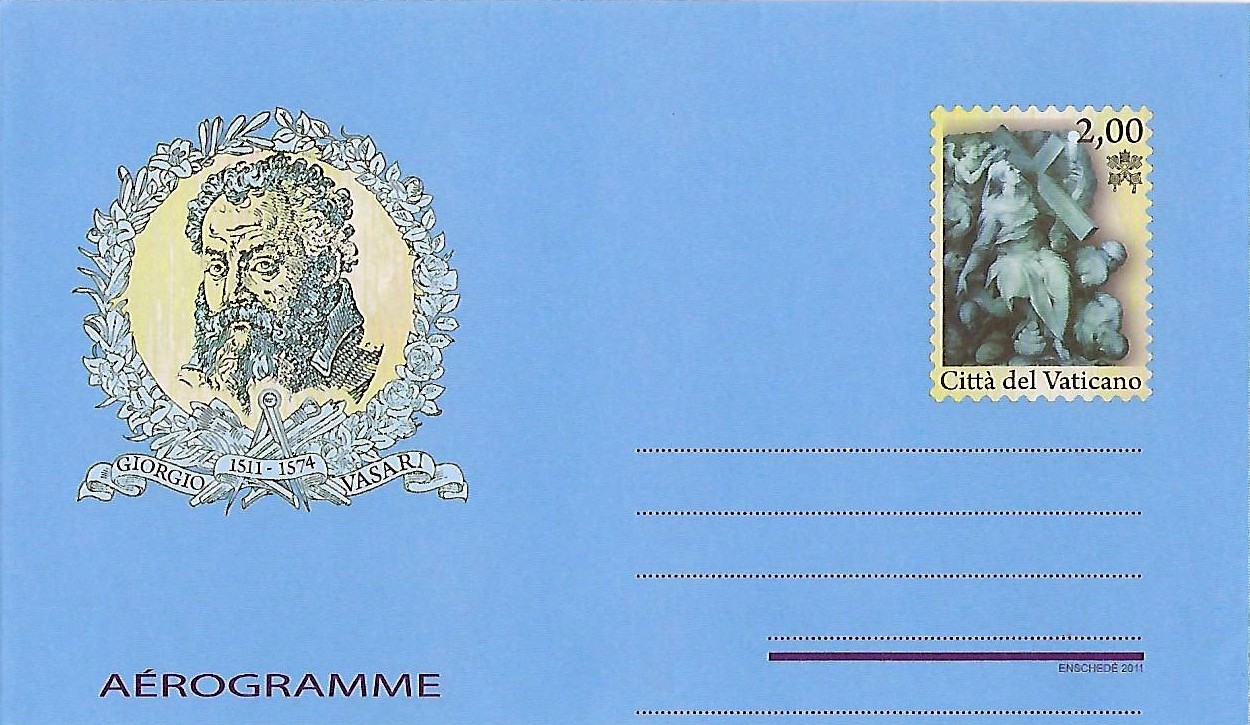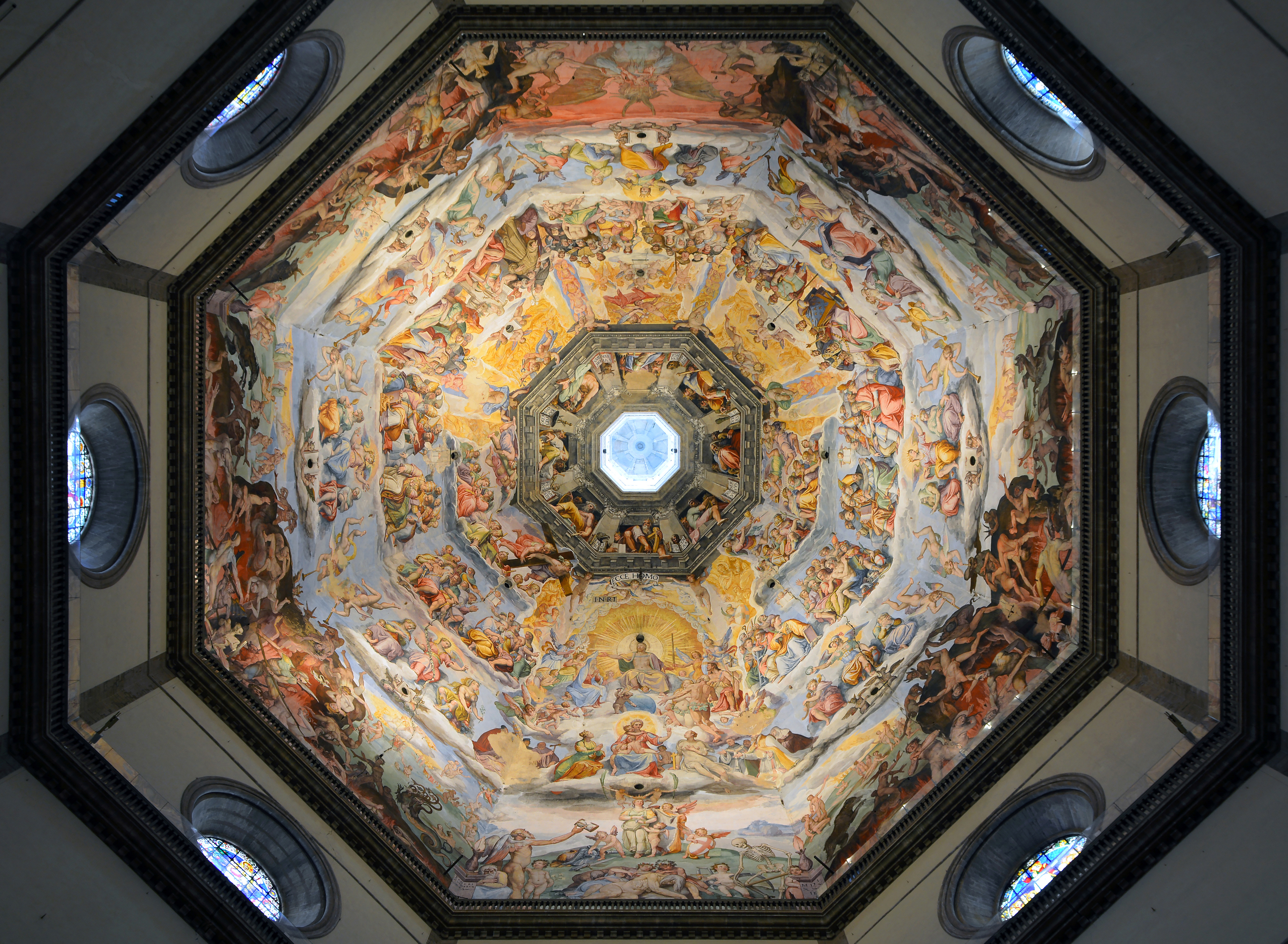
Home
 Giorgio Vasari: 500th Anniversary of Birth Vatican City Aerogramme, 2011 Giorgio Vasari holds a rather unique place in the history of Italian Renaissance art, and has been honored with two philatelic issues by Vatican City. In 2011, the annual aerogramme was released in honor of the 500th anniversary of his birth on July 30, 1511. And, in 2024, the 450th anniversary of his death (on June 27, 1574) was commemorated with the annual postal card set. Vasari was a multi-talented artist who was born in Arrezo in the province of Florence. His works span the disciplines of architecture, painting and sculpture. Working primarily in Florence, his works are also found in Rome in the Vatican. Early in his career, he was befriended by Michelangelo, whom he viewed as his hero and whose style he emulated.  Interior of Dome of Cattedrale di Santa Maria del Fiore (Florence) Photo by Livioandronico2013 From Wikimedia Commons, used under the terms of the Creative Commons Attribution-Share Alike 4.0 International license Vasari was a prolific painter during the mid-16th century. His painting depicting the Battle of Lepanto adorns the Sala Regia of the Apostolic Palace at the Vatican, and his "Adoration of the Magi" is housed in the Vatican Pinacoteca. His last major commission was for the ceiling of the cupola of the Duomo di Firenze (Florence Cathedral). The grand fresco, depicting the Last Judgement, was completed by others following his death.  Uffizi Loggia (Florence) Photo by Riccardo Speziari From Wikimedia Commons, used under the terms of the Creative Commons Attribution-Share Alike 3.0 Unported license In the field of architecture, his signature work is the Uffizi loggia. The building not only houses one of the most important art museums in the world, but also serves as a unique piece of urban planning, with a large courtyard facing the Arno River, serving as an extensive public piazza.  Tomb of Michelangelo Basilica of Santa Croce (Florence) Photo by Diego Delso From Wikimedia Commons, used under the terms of the Creative Commons Attribution-Share Alike 4.0 International license Although not a major focus of his career, Vasari contributed to the field of sculpture as well, with perhaps his most famous work being the tomb of Michelangelo, found in the Basilica of Santa Croce in Florence.  Title Page, First and Second Parts of the 1568 Edition of the "Lives" From Wikimedia Commons, in the Public Domain But Vasari is best remembered as perhaps the first art historian. In 1550, he published “Le Vite de' più eccellenti pittori, scultori, ed architettori” (“The Lives of the Most Excellent Painters, Sculptors, and Architects”), the first compilation of biographies of famous artists to that time. The book contains chapters on the works of Giotto, Masaccio, Fra Filippo Lippi, Botticelli, Leonardo da Vinci, Raphael, Michelangelo and Titian—the founders and giants of the period Vasari termed the "Rinascita" ("rebirth" in Italian), or the “Renaissance”. The 2011 aerogramme pictured at the top of the article has a self-portrait of Giorgio Vasari on the left, and the postal indicium in the upper right shows a detail from the painting, “The Battle of Lepanto”. The postal card set for 2024 contains four cards illustrating some of his works found at the Vatican: “Adoration of the Magi”, “The Battle of Lepanto”, the vault of the Chapel of Saint Peter the Martyr, and the dome of the Chapel of Saint Michael the Archangel. The images of the postal cards can be viewed by clicking on the Vatican State "Communicati 2024" in the references below. A review of the 2024 postal card release can also be found in the Vatican Notes article found in the references. REFERENCES: |